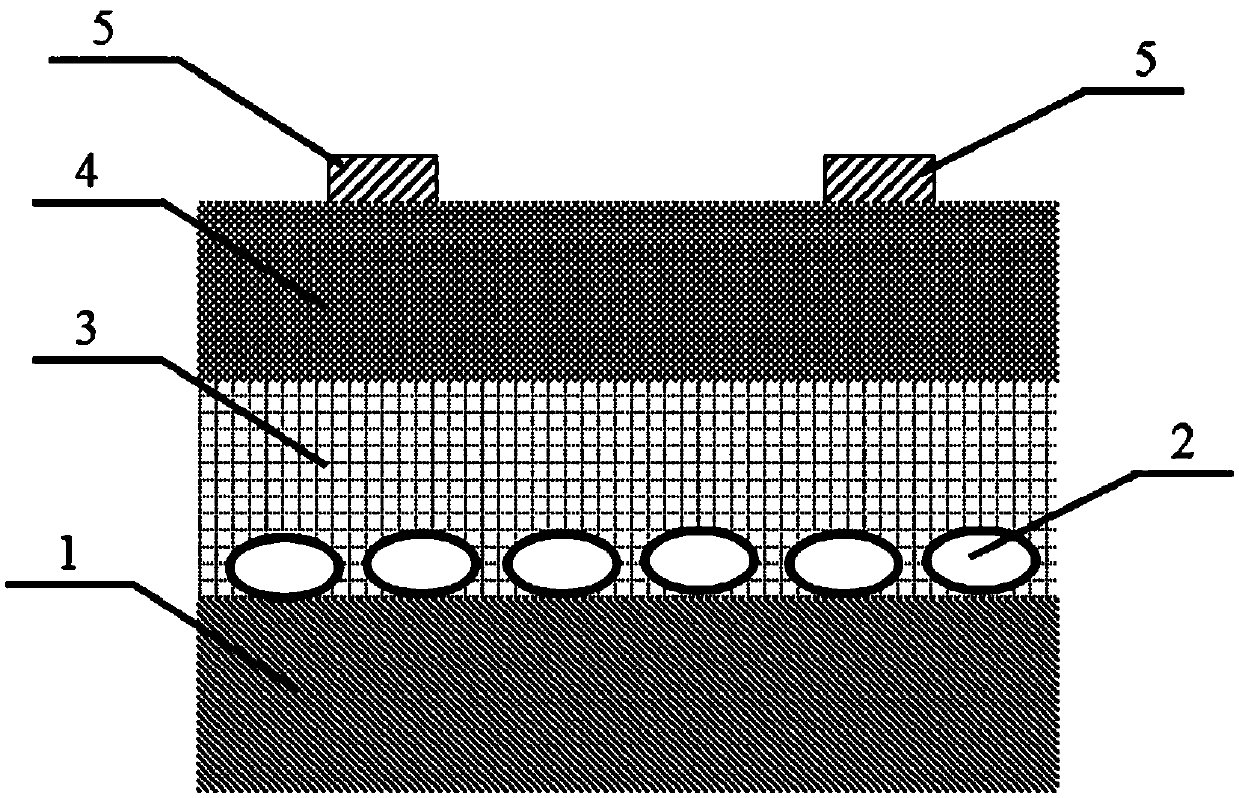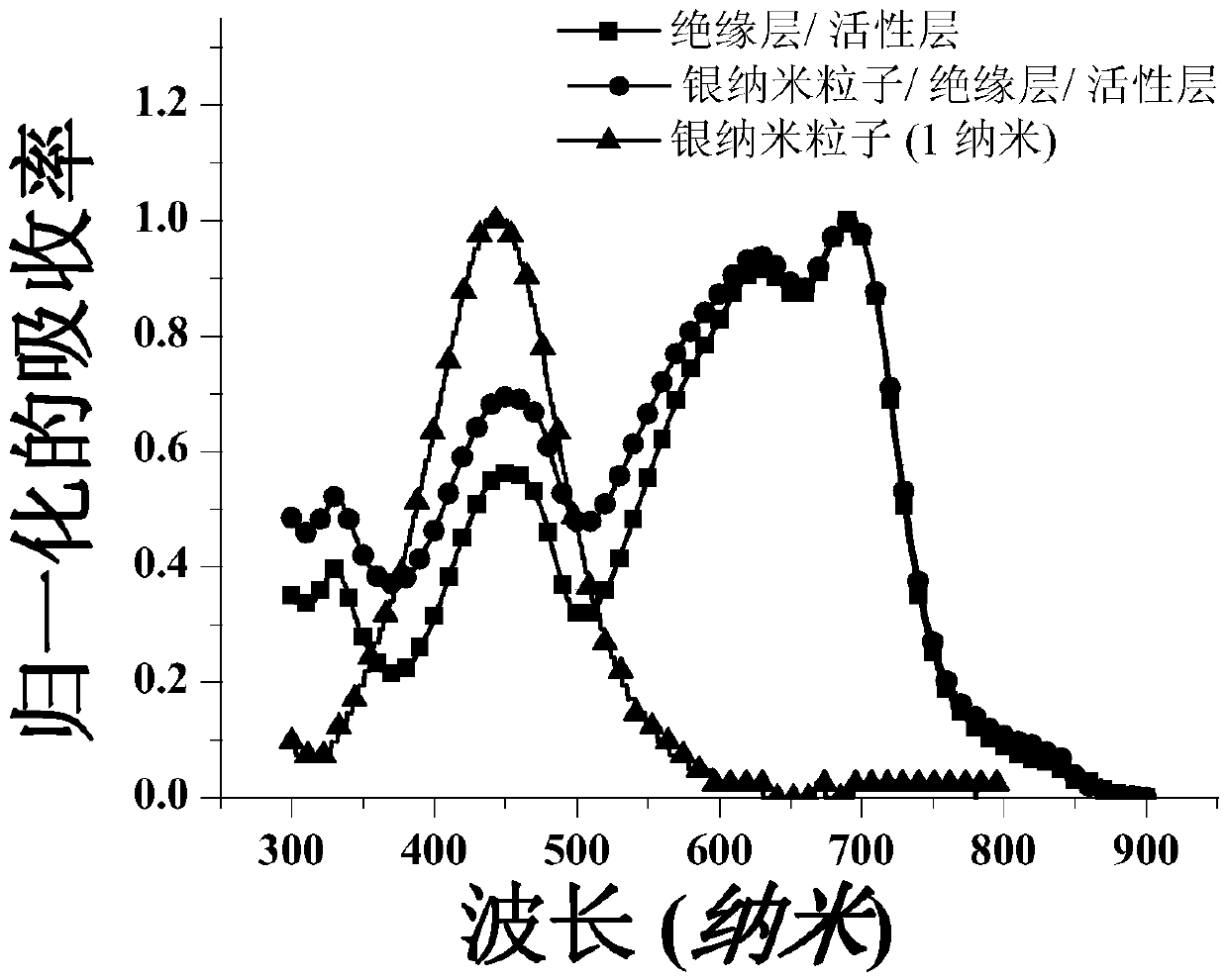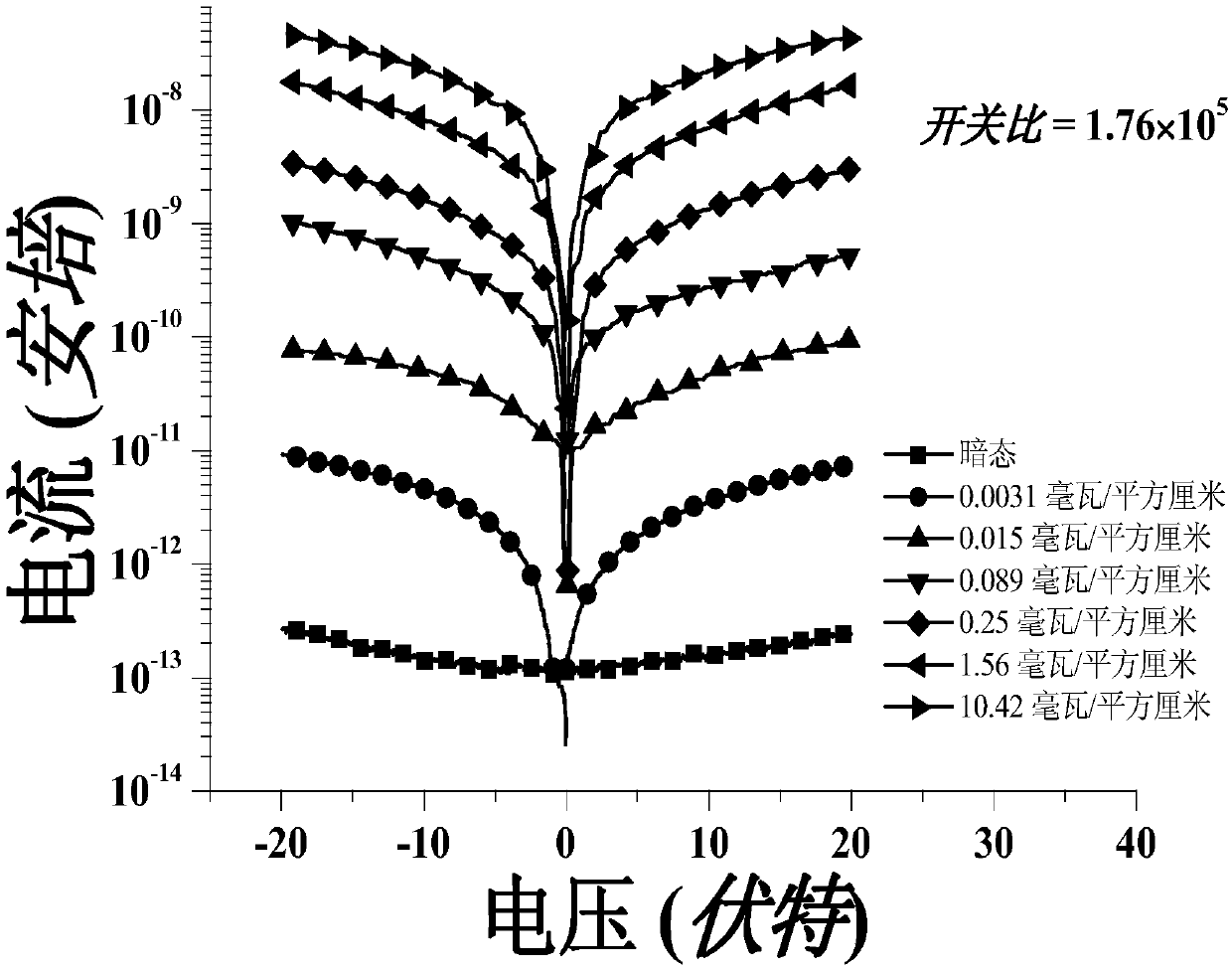A photoconductive organic semiconductor detector and its preparation method
An organic semiconductor and detector technology, applied in the field of photoconductive organic semiconductor detectors and their preparation, can solve problems such as high dark current and high mobility of materials, and achieve improved detection ratio and switching speed, high switching ratio and responsivity, The effect of increasing distance
- Summary
- Abstract
- Description
- Claims
- Application Information
AI Technical Summary
Problems solved by technology
Method used
Image
Examples
Embodiment 1
[0050] Such as figure 1 As shown, the photoconductive organic semiconductor detector of this embodiment is formed by stacking a quartz wafer substrate 1, metal nanoparticles 2, an organic insulating layer 3, an organic photosensitive layer 4 and a metal electrode 5 from bottom to top; The absorption peak position of the metal nanoparticles matches the absorption peak position of the organic photosensitive layer to generate localized plasmon resonance.
[0051] The preparation process of the photoconductive organic semiconductor detector of this embodiment is as follows:
[0052] 1. The quartz substrate was soaked in deionized water, acetone, deionized water, ITO cleaning solution, deionized water and isopropanol for 30 minutes, and then placed in an oven at 80°C for drying.
[0053] 2. Plasma treatment was carried out under an oxygen atmosphere for 4 minutes on a clean quartz substrate surface, and the oxygen flow rate during the Plasma process was 4-5mL / s.
[0054] 3. Metal...
Embodiment 2
[0068] The photoconductive organic semiconductor detector of the present embodiment adopts PTB7:PC except the organic photosensitive layer 60 Except for the BM material, other features are the same as in Embodiment 1.
[0069] The preparation method of the organic photosensitive layer of the present embodiment is as follows:
[0070] The organic photosensitive layer was prepared by spin-coating on the substrate with PMMA layer. The organic photosensitive layer uses PTB7:PC 60 BM (2:1-20:1wt%), the solvent is chlorobenzene (CB), and the concentration of the organic photosensitive material is 2wt%. A 100 nm organic photosensitive layer was spin-coated at a rotation speed of 3000 rpm for 30 min. Afterwards, the sample was placed in a vacuum chamber and evacuated for 2 hours to ensure that the solvent was completely removed.
[0071] Figure 11 For Ag nanoparticles, quartz / PMMA / PTB7:PC 60 BM(2:1wt%) / Ag electrode and quartz / Ag nanoparticles / PMMA / PTB7:PC 60Absorption peaks of...
Embodiment 3
[0076] The photoconductive organic semiconductor detector of the present embodiment adopts PffBT4T-2OD:PC except that the organic photosensitive layer 71 Except for the BM material, other features are the same as in Embodiment 1.
[0077] The preparation method of the organic photosensitive layer of the present embodiment is as follows:
[0078] The organic photosensitive layer was prepared by thermal spin coating on the substrate with PMMA layer. Organic photosensitive layer selects PffBT4T-2OD: PC 71 BM (1:1.2-10:1wt%), the solvent is chlorobenzene / dichlorobenzene (CB / DCB (1:1))+3% DIO, and the concentration of the organic photosensitive material is 0.9wt%. Before the thermal spin coating, place the solution and the substrate spin-coated with the PMMA layer on a hot stage for heating at 110°C for 30 minutes, and then spin-coat a 120nm organic photosensitive layer with a rotation speed of 1000 rpm for 30 minutes. The entire thermal spin coating process takes 2 minutes Fini...
PUM
 Login to View More
Login to View More Abstract
Description
Claims
Application Information
 Login to View More
Login to View More - Generate Ideas
- Intellectual Property
- Life Sciences
- Materials
- Tech Scout
- Unparalleled Data Quality
- Higher Quality Content
- 60% Fewer Hallucinations
Browse by: Latest US Patents, China's latest patents, Technical Efficacy Thesaurus, Application Domain, Technology Topic, Popular Technical Reports.
© 2025 PatSnap. All rights reserved.Legal|Privacy policy|Modern Slavery Act Transparency Statement|Sitemap|About US| Contact US: help@patsnap.com



